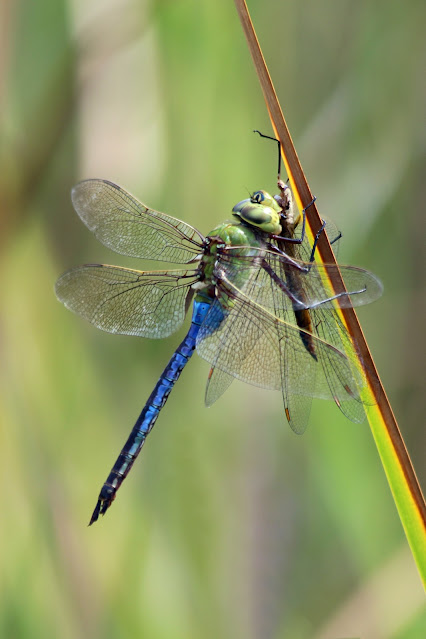I finished cleaning out another photo folder and decided that's a good enough reason to post selected images. It was a slow process relative to the project as a whole. I deleted almost 8,000 additional images out of 9,534. Anyway, here are some survivors...
This is a white belted ringtail dragonfly (Erpetogomphus compositus). The images from this series of photographs appear to be my only photographic experience with this brand of dragonfly. I know this in part because I had to look the little fellow up. I kept 23 images, mostly because of some rather dramatic changes in the depth of field. This particular image was shot at f16, 1/160 sec.
 |
| 070515 |
Matilija poppy, or Romneya coulteri.
 |
| 042615 |
Female Allen's hummingbird (Selasphorus sasin). The first three images are the same bird.
 |
| 050215 |
 |
| 050215 |
 |
| 050215 |
 |
| 050115 |
Male Calypte anna hummingbird.
 |
| 052315 |
Eriogonum fasciculatum, AKA, California buckwheat.
 |
| 052515 |
A somewhat evasive Monarch butterfly (Danaus plexippus).

052515
Flame skimmer (Libellula saturata).
The gopher known as, "Tim". Tim was a lot of fun for awhile. On more than a few occasions he would pop out of one of his holes just as we approached along the sidewalk, seemingly aware it was us. Docken contributed the almonds. Tim liked almonds.
 |
| 080115 |
It might be, Crassula perforata.
 |
| 060615 |
Male Calypte anna hummingbird. As you can see he's at that awkward age where his iridescent feathering is just starting to come in.
 |
| 102515 |
Flame skimmer (Libellula saturata).
 |
| 103115 |
Northern mockingbird (Mimus polyglottos). This is the first scientific name of a bird I remember learning. When I was in the 6th grade I spent a rather inordinate amount of time studying a Peterson, Field Guide to Birds of Western North America (I believe). I was mostly fascinated with the drawings. For whatever reason, the scientific name stuck with me. The genus, Mimus : mimic : imitator and polyglottos : polyglot : multilingual.
I can't tell male or female from the photo. Typically the male is slightly larger than the female but the most telling distinctions are in their behavior. For one, the males are more prolific in their singing behavior. You know... it's a sin to kill a mockingbird.
 |
| 112115 |
 |
| 112115 |
 |
| 110115 |
The current photo folder being scoured only contains 3,300 images, which is relatively low volume. I'm not sure why that is. If it doesn't yield enough suitable images for a post I might choose to carry into the following folder which contains 9,473 images. If so, it's probably going to be awhile before I post again. I don't suppose it matters much how many images are in a post but there's also a sense of accomplishment going on here. I'd like to have this little project completed. Part of the point is to back up images I care to keep onto a drive that I'm not getting warnings about. So far I've backed up about 11,000 images. Once finished I'm estimating I'll have thrown away somewhere around 155,000 images and will have kept about 25,000. Give or take. Here's a little photography tip: if you want to take good photographs start by taking a lot of pictures.
























































